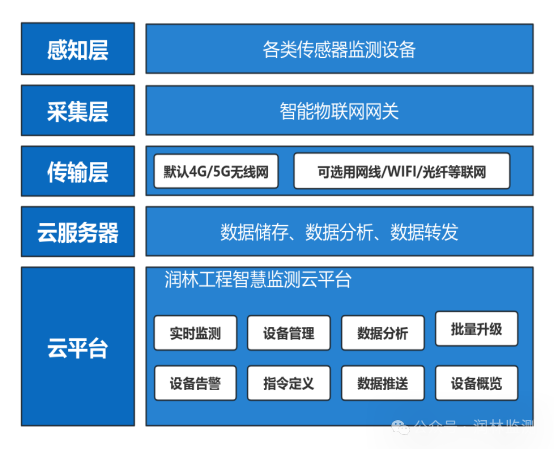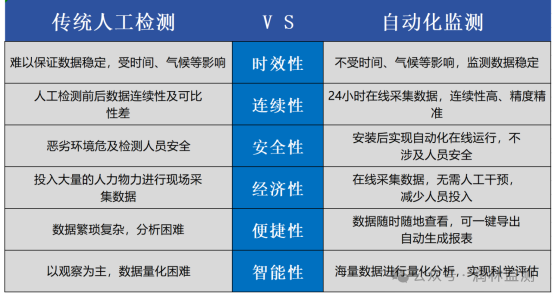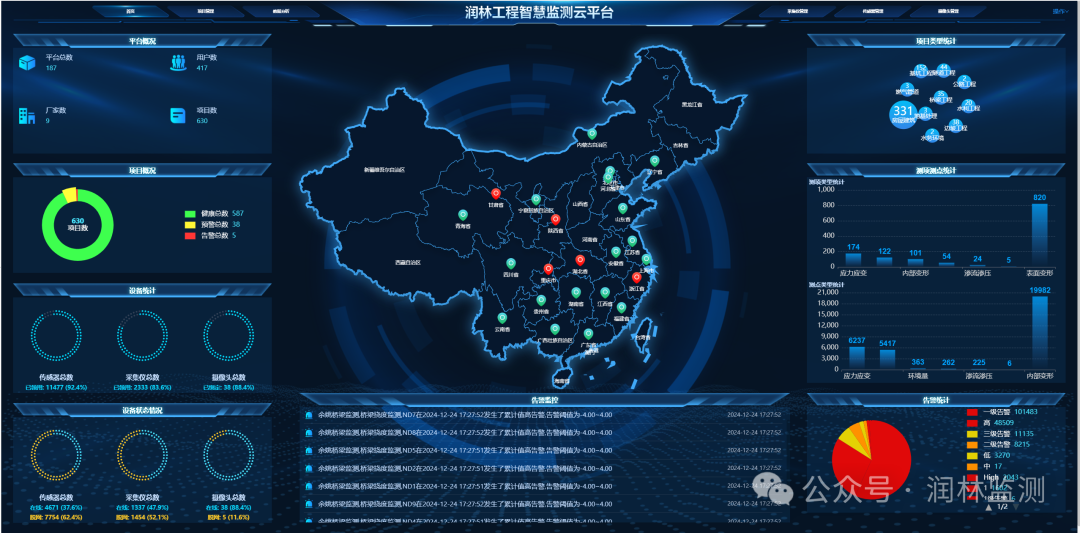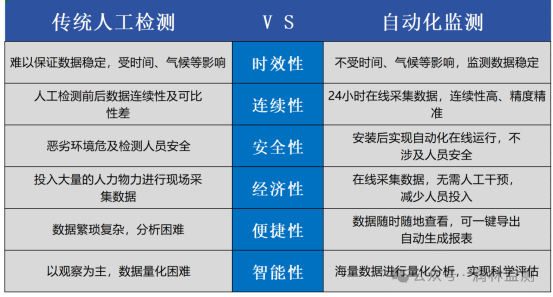In recent years, the country has attached great importance to the important role of science and technology in disaster reduction, and has promoted the sustainable development of scientific and technological disaster prevention and reduction work through the release of relevant policy documents and the implementation of scientific and technological projects. For example, policy documents such as the National Medium - and Long Term Science and Technology Development Plan Outline (2006-2020) comprehensively deploy disaster prevention and reduction technology work, and provide comprehensive support for disaster prevention and reduction work through national programs such as 973 and 863
Automated monitoring is a technology that utilizes advanced sensors, instruments, computer technology, and network communication to monitor and control specific objects in real-time, online, and continuously. It can collect and process data in real-time, detect abnormal situations in a timely manner, provide support for management decisions, and ensure the stability, efficiency, and safety of the process
The automatic monitoring system is mainly composed of sensor part, data acquisition system, edge computing gateway, data transmission system, monitoring management system and monitoring screen

The advantages of automated monitoring
& nbsp; & nbsp; Automated monitoring has multiple advantages compared to traditional manual monitoring:

The role of automated monitoring in disaster prevention and reduction
Automated monitoring plays a crucial role in disaster prevention and reduction. It not only significantly improves the accuracy of monitoring and early warning and the efficiency of emergency response, but also provides strong support for protecting people's lives and property safety and promoting social stability and development.
& nbsp; & nbsp; & nbsp; & nbsp; & nbsp; EstablishSet up automated monitoring schemes for various industries
Runlin Monitoring not only independently researches, produces, and sells products, but also provides customized IoT industry solutions for geological hazard monitoring, water conservancy dam safety monitoring, hydrological and rainfall monitoring, water quality monitoring, mining safety monitoring, highway slope safety monitoring, bridge structure health monitoring, and high-rise building structure online monitoring for users
& nbsp;< img class="rich_pages wxw-img" data-galleryid="" data-imgfileid="100000049" data-ratio="0.8290766208251473" data-s="300,640" src="/uploadfile/202503/79389c1783b06cf.png" data-type="png" data-w="509" xss="clean"/>
& nbsp;& nbsp;The future development trend of automated monitoring
The future development trends of automated monitoring mainly include intelligence, networking, integration, standardization, and normalization
Intelligence:By introducing advanced technologies such as artificial intelligence and machine learning, automated monitoring systems can achieve intelligent perception, analysis, and decision-making in various aspects such as the environment, equipment, and processes
Networking:By connecting various monitoring points, devices, and systems, a massive monitoring network is constructed to achieve real-time data sharing, remote monitoring, and collaborative operations
Integration:By integrating monitoring systems of different types and functions together, comprehensive monitoring and management of various aspects such as environment, equipment, and processes can be achieved
Standardization and normalization:
The innovation of technology has greatly improved the early warning and monitoring capabilities for natural disasters, promoted rapid decision-making, achieved effective allocation of resources, and accelerated emergency response speed for traffic congestion and severely affected areas. Automated monitoring plays a crucial role in responding to crises caused by natural disasters




